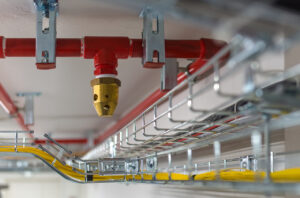In a recent article we reported on new guidance issued by the HSE and the UK Lubricants Association Metalworking Fluid Product Stewardship Group and how exposure to the fluids used in cooling and lubricating metalworking processes can result in dermatitis and irritation of the skin from direct contact with the fluid or breathing problems such as occupational asthma and irritation of the respiratory tract from breathing in the mists generated by the process.
The HSE in Northern Ireland has now announced that during October 2018 they will be running an inspection campaign focussed on manufacturing and engineering companies who use metal working fluids (MWF). The inspectors will be checking that:
- a suitable risk assessment is available;
- exposure to MWF by inhalation and skin contact is either prevented or adequately controlled;
- quality of MWF is maintained and measures taken to minimise bacterial contamination of metalworking and associated washing fluids;
- health surveillance is being carried out where necessary; and
- machinery is adequately guarded
Users of MWFs are advised to check the following points:
- is there provision of local exhaust ventilation and valid Thorough Examination and Test Reports where applicable?
- are there adequate controls in place when using compressed air e.g. enclosure, low pressure nozzles, automatic alternative to manual clean down of components?
- is there an adequate system in place for managing fluid quality and controlling bacterial growth in conventional water-mix MWFs e.g. dip slides, monitoring of pH and fluid concentration?
- is there adequate information, instruction and training provided in relation to the health risks associated with exposure to MWFs and working practices required?
- is there suitable RPE/PPE provided for mixing and cleaning/maintenance tasks and have your employees been Face Fit Tested?
- is there monitoring records available in relation to evaluation of mist control measures?
- is health surveillance in place where a risk from dermal and/or inhalation exposure has been identified?
- is there enclosure of machining processes e.g. through guarding?
Please speak to your usual PIB Risk Management contact if you have any questions.

Second Staircases In New Tall Residential Buildings

A New Regime For Residential Buildings In Wales

Vibrating Alarms And Painted Cables – New Guidance Available

Two-Tyred: Driver Fatigue

New E-Bike and E-Scooter Safety Guidance for Public Transport Operators
